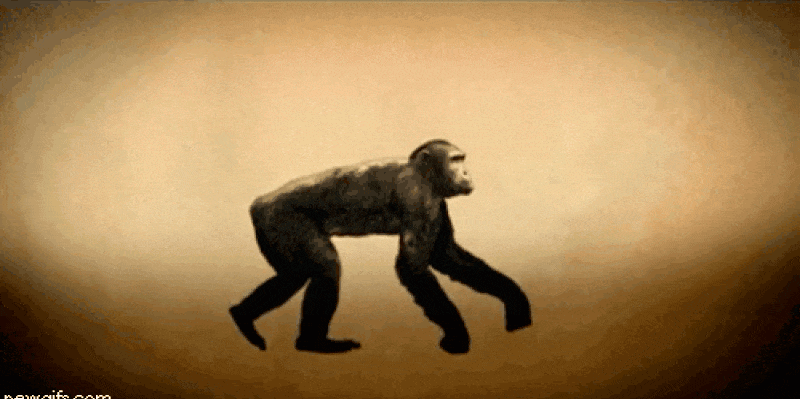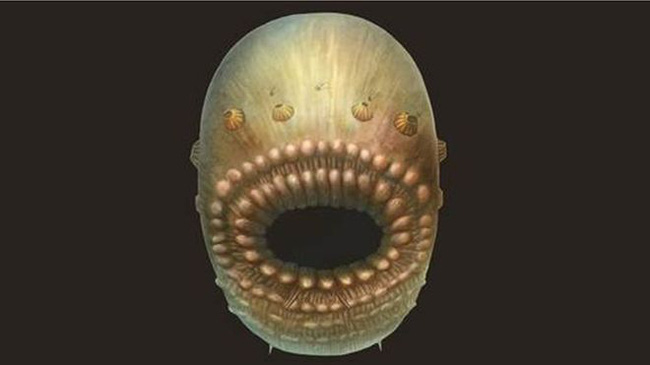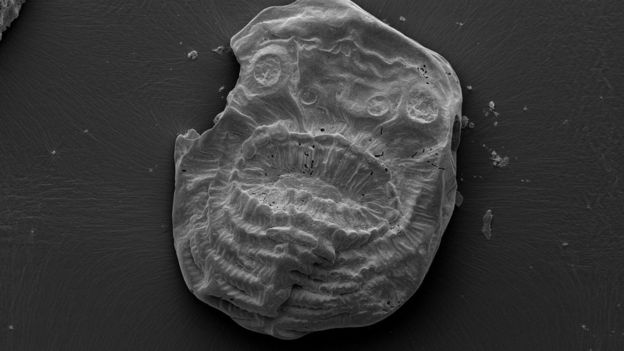This horror creature turns out to be the oldest human ancestor
I can't believe such a monster is our ancestor.
Hundreds of thousands of years ago, a part of primates separated from the branch evolved, becoming who we are today.

However, it is not if we call it our longest ancestor. Recently, experts have found an official creature "ancestor" of not only humans, but also of many animals today.
Specifically, it is a marine creature found in a fossil 540 million years old, named Saccorhytus . This creature is thought to evolve into fish, and ultimately human beings.

This is the ancestor of mankind
The discoverer of Saccorhytus is a group of international experts from England, China and Germany. Experts say Saccorhytus is the best example of the so-called " secondary mouth organism " (deuterostomes) - the common ancestor of many living things today.
It is less than 1mm long, thought to live in the sandy bottom of the original sea.
According to Professor Simon Conway Morris of Cambridge University (UK) - the head of the study, there is currently no evidence that this animal has anus. This proves that they eat and . discharge on a single path
"Seeing with the naked eye, what we study looks like a black grain of sand. But under a microscope, every detail shows up enough to surprise anyone" - Conway replied to the BBC.
"We believe that primitive secondary oral organisms are the beginning of countless creatures, including us. The common ancestor of all I think is this."

Dr. Degan Shu from Northwestern University in Xi'an, Shaanxi (China), where found fossil specimens, said: "Saccorhytus has shown us a view of the early period of evolution."
So far, a secondary group of oral organisms has been found mainly during the period of 510-520 million years ago. They evolved not only into vertebrates, but also species like starfish and sea urchins.
Research shows that the body of Saccorhytus is symmetrical - the property has been inherited by many animals later. In addition, this creature has a thin, flexible skin, muscles wrapped to move, and most notably a very wide mouth, almost embracing the body. As expected, this creature eats plankton, even smaller creatures.
The study details are published in the journal Nature.
- Discovered the new face of a human ancestor 3.9 million years old
- Human ancestors are ... eel?
- Discover the earliest ancestors of humankind
- The oldest living creatures still exist on Earth
- Treatment of neurological disorders by jellyfish brain
- 10 oldest antiquities in the world
- Find the oldest relative of T.rex
- Discover a trace of 585 million years old creature
- The genome of a marine creature carries the secret of the unicellular ancestor of human beings
- Horror diseases are not for the weak
- Thought barbed wire, turned out to be a creepy creature that many people put on their hair
- Johnny Depp is named for the extinct creature
 'Fine laughs' - Scary and painful torture in ancient times
'Fine laughs' - Scary and painful torture in ancient times The sequence of numbers 142857 of the Egyptian pyramids is known as the strangest number in the world - Why?
The sequence of numbers 142857 of the Egyptian pyramids is known as the strangest number in the world - Why? History of the iron
History of the iron What is alum?
What is alum? Human ancestors are ... eel?
Human ancestors are ... eel? 